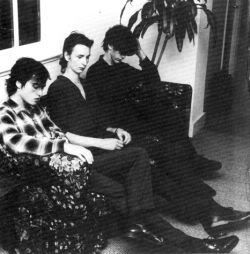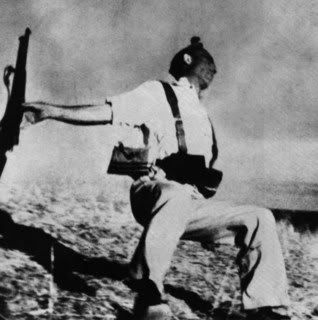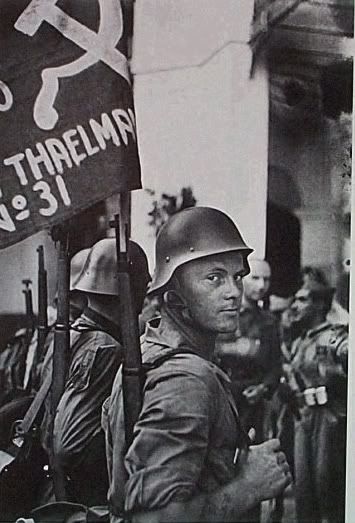Fast forward three months later…
The twin pressures of maintaining a long distance relationship and an early Continental winter quickly led me to reexamine Felt’s place in my universe.
In retrospect, my teaching experience was nowhere nearly as nightmarish as I sometimes describe it. I was just terribly lonely most of the time. Either way, I didn’t want to waste a year moping, so I spent every free moment exploring my new surroundings. I hung out at art galleries, monuments and used bookshops on the Left Bank. I also spent a good deal of time was spent borrowing CDs from local libraries. I would take out up to ten discs from as many as four libraries at a time, copy them onto my laptop, and promptly return them by the end of the week. It was miserable for my back, but in the long run, it was worth the pain. By the end of my stay, I added 200+ discs to my collection; many of them unavailable or long out of print in the United States.
By late October, I had overplayed Me and a Monkey on the Moon and was desperate to hear more. Sadly, their original albums proved elusive (in the libraries and in the record shops) so I had to settle for two best ofs to get my fix.
Absolute Classic Masterpieces is a retrospective of Felt’s decade-long spell in the indie ghetto. Volume 1 covers their tenure at Cherry Red Records, while the double-disc Volume 2 includes singles and album tracks released on Creation Records. For the sake of time, I’m going to focus on Volume 1 and leave the Creation era stuff for a piece on great labels of the past.
Before I begin, I should point out that Volume 1 is sequenced in reverse chronological order. This is a minor grievance, considering the quality of the music, but some people dislike working backwards when tracking a band’s progress.

I once read that Belle & Sebastian were heavily influenced by Felt. This tidbit of misinformation led me down a road of confusion and disappointment when I first heard Felt. Musically, the two groups have little in common. Where B&S are busy and ramshackle, Felt was tight and minimalist. Volume 1 does a fine job of confirming the dissimilarity between the two groups.
(EDITOR’S NOTE: It should be noted that both groups are notoriously guarded about their private lives and little is known about individual members. It seems to me that B&S were fascinated by the enigmatic nature of Felt and sought to be as difficult with the press during their early years in the mid 1990s. Go on; try to find one article about them from 1996-7 that isn’t rife with rumors and hearsay about the group’s identity.)
Early songs by Felt, such as “Trails of Colour Dissolve” and “Templeroy,” were undeniably the product of Lawrence’s obsession with Television, Lou Reed and DIY punk ethics. His vocal inflections and strange choices for lyrical subject matter and song titles betray a heavy influence of mid 70s New York. But without a counterweight to Lawrence’s rather obvious influences, Felt would’ve been another blip in the UK indie landscape. Enter Maurice Deebank, the classically trained foil to the self-taught, punk rock Lawrence. Deebank’s delicate arpeggios meshed seamlessly with Lawrence’s minimalist strumming, creating a sound unlike any early 1980s guitar group.
Their unique guitar interplay is best evidenced on the opening track, “Primitive Painters.” This mini-epic sports a heavily drawled and self-depreciative vocal by Lawrence and is bolstered by exceptional performances by Deebank and keyboardist Martin Duffy. This was the first Felt song to receive any significant attention; even though it sounds unlike they’d recorded previously. This can be attributed to the production work of Cocteau Twin Robin Guthrie and partner/bandmate Liz Frazier, who provided the soaring background vocal. In any case, disregard the indie politics and play this song at a very high volume on a large set of speakers. You will be breathtaken. I promise.
The song that really got me hooked on this compilation was “Penelope Tree.” Named for a 1960s model that Lawrence saw in an oversized special edition of Vogue, it is everything brilliant about Felt summarized in two minutes and fifty-seven seconds. The first thing you notice is the absence of cymbals. During the early years, drummer Garry Ainge played a very simple kit, creating a sound that was not unlike the Velvet Underground’s Maureen Tucker. The dry percussive drumming, coupled with jangling guitars, creates a stark and moody song that pretty much describes my lonesome expatriate life. I spent many cold nights wandering the streets of Paris listening to that song on repeat and just wishing that I was somewhere else.

FINAL NOTE:
In regards to Volume 2: If you’re a devout fan of anything released by Creation Records during the mid to late 1980s, it’s a must have. If not, you may find it a bit dull because of all the instrumentals culled from Let the Snakes Crinkle Their Heads to Death and Train Above the City.
Besides, Deebank left the group well before the ink dried on the Creation contract, so you don’t even get any of the guitar noodling that makes Volume 1 such an invigorating listen. Then again, I’m biased…
Crucial listening:
Crystal Ball, Primitive Painters, Red Indians, Penelope Tree, Fortune.
(Believe it or not, you can find most of these on the I-Tunes Music Store.)
More on Felt
Felt: A Retrospective. Probably the only good site about Lawrence & Co. Also the source for the band photos and mp3s
Video for Primative Painters
DOWNLOAD The gorgeous “Buried Wild Blind.” Originally released as a b-side to The Final Resting Of The Ark 12”. Remains unreleased on CD
DOWNLOAD Early version of "Red Indians”




